2006 03 06
By Philip Gardiner | bestsyndication.com
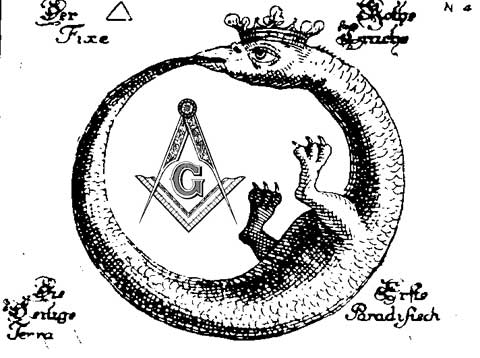
Abraham the Israelite father of mankind, and Hiram of the Freemasons, are one and the same, and both are based upon serpent worshippers with Indian Naga or serpent deity backgrounds. A grand statement, but one that I am not alone in making.
Flavious Josephus said in his History of the Jews:
“These Jews are derived from the Indian philosophers; they are named by the Indians Calani.”
Megasthenes, sent to India by Seleucus Nicator, also said that the Jews were called “Kalani” and that they were an Indian tribe.
Clearchus of Soli said:
“The Jews descend from the philosophers of India. The philosophers are called in India Calanians and in Syria Jews. The name of their capital is very difficult to pronounce. It is called Jerusalem.”
If Abraham as the father of the Jewish race is therefore a legendary figure of India, then who is he? And did he exist at all? It’s time to upset traditionalists.
The obvious person for an Indian Abraham is Brahma (A-Brahma) who just happens to have a consort and sister named Saraisvati [1] which is amazingly similar to the name of the Biblical Abraham’s wife - Sarai. Indeed Abraham is said to have learned his trade in Ur (the ‘Ur of the Chaldees’ in the Bible said to be in ancient Sumer), which is very close to the Persian border being en-route to India.
It is also a fact that the name of Brahma spread throughout this entire area so much so, that the Persians even adopted him as one of their deities. So, the very area where Abraham is said to have learned his priestly trade is the very area that the Indian Brahma was being spread and worshipped. What more can we find within this area of the Chaldees?
The Chaldeans were called Kaul-Deva, and they were a priestly caste living in among other places, Afghanistan, Kashmir and Pakistan. (Kaul-Deva meaning the Shining Calani, hence these were enlightened Shining Ones, a group going back to ancient Sumeria and outlined in my book The Shining Ones).
So Abraham/Brahma learned his trade among the Chaldees, who were a priestly caste related to the Indian sub-continent and were the Shining priesthood or enlightened souls. In this respect then Abraham was simply a title given to the high priest or Lord of the sect of Brahma. But if, like in ancient Egypt, he needed to duplicate the life of the gods, then he too would have needed a wife/sister. The fact that Saraisvati was both Brahma’s consort and sister, also relates to the Biblical account of Abraham.
“But indeed she is truly my sister. She is the daughter of my father, but not the daughter of my mother; and she became my wife.” (Genesis 20:12.)
This same pattern of hidden Gnosis would later become part of the Mary/Jesus myth. The complex twists and turns that modern writers such as Dan Brown in the Da Vinci Code seem to have to create to explain the seemingly peculiar nature of Jesus’ relationship with Mary the Mother and Mary Magdalene are really quite remarkable. In fact it is simple.
Like Sarai is Saraisvati, she is also Isis, the greatest of Egyptian goddesses. Mary too is a duplicate of Isis. You see Isis was the consort of Osiris, hence the wife part. She was therefore the mother of Horus the Saviour - hence the mother of god. But Horus was Osiris reincarnated and so Isis was also his sister. Mary the Mother, Mary Magdalene the lover/consort and Mary of Bethany the sister are really and truly the hidden aspects of a much older Gnostic tradition that has no literal element at all! The three Mary’s are in reality three aspects of the one feminine principle - the feminine trinity.
Of course, we could find ourselves in trouble here, as nowhere does it state that Mary of Bethany was the sister of Jesus. However, its does state that Mary of Bethany was the sister of Lazarus, whom Jesus raised from the dead, or more pertinently was Jesus, raised from the dead.
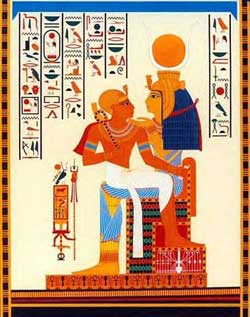
Isis and Horus |
You see, in Egyptian mythology it was the role of the son of God and saviour, Horus, to raise his father, Osiris, from the dead and in a sense resurrect himself, as Horus was Osiris resurrected.
However, Lazarus and Osiris are distinctly different names and so cannot be related. How wrong this is, although there is still much debate on the exact etymology, many believe that there is a proven link. How?
The ancient Egyptian designation for Osiris was Asar or Azar. Now, when the Egyptians spoke of their Gods they indicated them with “the” and so we would have had “the Azar.” This term “the” also meant Lord or God, like the Greek word for God The-os or Theos. One of the Hebrew terms for Lord was El and was applied to their many deities, such as El-Shaddai or El-hoim. So when the Hebraic writers included Osiris in their myths they put him in as El-Azar The Lord Osiris. This in the later Latin translation was changed to El-Azar-us. This use of the “us” was the way that masculine names ended under the Roman language. In fact, in Arabic Lazarus is still spelt El-Azir, hence missing the “us”. So we now have El-Azar-us, which reduced further into Lazarus. In this way the Egyptian, or should we say much older mythos, became the literal truth of the Biblical record.
Horus therefore raised “El-Azar-us” or “El-Osiris” from the dead, just as Christ was to raise “Lazarus.” This story in itself is an allegory of the sun god Osiris being reborn but never the less gives us the remarkable fact that Mary of Bethany, as the sister of Lazarus, was in literary and esoteric reality, the sister of Jesus.
And so, as we find that Jesus and Mary were in reality based upon a much older Egyptian mythology, which itself stretches back even further in time to ancient Sumeria, we also find that the story of Abraham and Sarai are no different. In the Koran (6:75) we find that Abraham’s father was called Azar (Osiris), and so Abraham was Horus, just as Jesus was Horus. Lo and behold, we also discover (Luke 16: 22-25) that Lazarus himself rested in the bosom of Abraham, just as Osiris as the crippled god, rested in his resurrecting son’s arms.
And it was this Abraham, this Brahma or Osiris, that is said to have spawned the very Children of Israel. Let’s take a look at Abraham’s sons and see if we can reveal the hidden serpent lineage or serpent secrets that we found elsewhere in The Serpent Grail.
Abraham’s son Ishmael, by Hagar, his maidservant, also had children who lived in India, or Havilah (land of serpents), as it is in Genesis. Both famous sons of Abraham, Ishmael and Isaac have names that revert back to the worship of that serpent Hindu deity Siva. [2]
Ishmael is Ish-Maal in Hebrew, and in Sanskrit, Ish-Mahal means ‘Great Siva.’ Isaac is Ishaak in Hebrew, and Ishakhu in Sanskrit which means ‘Friend of Siva.’ Most startling of all is the very name of Abraham himself, which could mean that Abraham was nothing other than a Naga King - Ab Ram - actually means ‘exalted snake.’
Hiram, the famous Freemasonic and Biblical builder of Temples was Ahi-Ram and it is time to take a look at this mythical character.
Hiram and the Temple
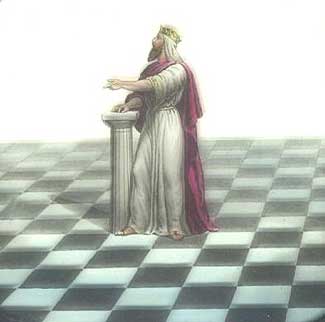
Hiram King of Tyre |
Hiram of Tyre, the son of a Jewish mother and a Phoenician father is credited with the decoration of the fabled Temple of Solomon. He was said to have been the “son of a widow of the tribe of Naphtali . . . He cast two bronze pillars” 1 Kings 7:13-15.
The standard of the Tribe of Naphtali, according to Jewish tradition is a serpent or basilisk and this could have come from the Jewish sojourn into Egypt, as Jewish tradition states that Naphtali was the brother of Joseph chosen to represent the family to Pharaoh. Hiram is also said to be a son of the Tribe of Dan (Chronicles 11) and even the tribe of Dan had an emblem, which was the serpent and the horse. Barbara Walker in The Woman’s Encyclopaedia of Myths and Secrets points out:
“Writers of the Old Testament disliked the Danites, whom they called serpents (Genesis 49:17). Nevertheless, they adopted Dani-El or Daniel, a Phoenician god of divination, and transformed him into a Hebrew prophet. His magic powers were like those of the Danites emanating from the Goddess Dana and her sacred serpents…. Daniel was not a personal name but a title, like the Celtic one.”
Here we have a distinct conclusion, that Daniel of the Bible is related to the very same Danu or Dana goddess of Celtic Europe and that this goddess is conclusively related to serpents in this case the serpens astrological sign as worshipped by the Danites. We also have confirmation that the Jewish people collected their belief system from those around them. Thus far, as we have gathered, they have melded the beliefs of India, Egypt and now Phoenician into their own growing system.
According to the book of Chronicles, this son of Dan, Hiram, was a cunning man, endued with understanding and skilful in the work of gold, silver, brass, stone and timber. He was also credited with certain tools, which could pierce stone. According to the book of Kings the Temple was prepared in stone before it was brought to the site being something like a ready-made or prefabricated building. It was said that neither hammer nor axe, nor any tool of iron was used in the building. So how was it built? At least, symbolically?
Well, in Exodus, Moses is told to build an altar to the Lord without tools, lest he should pollute it, and it seems the same symbolism was utilized here in the building of the Temple. According to Rabbinical teaching the prefabrication was performed by the Shamir, a giant worm or serpent that could cut stones. Not dissimilar to Norse and Celtic beliefs where Valhalla and Camelot were built with the fire of the dragon. According to the Islamic accounts of Rashi and Maimonides, the Shamir was a living creature. This is hardly likely, unless we understand this creature to be ourselves. Indeed what is more likely is that the idea of the wisdom of the “worm” (which evolved from the word orm for serpent anyway) or snake, Shamir, was used in the construction of the symbolic Temple of man - a Gnostic belief. [3]
It was fabled that serpent-linked Naga’s escaped their country and took this deep and seemingly, architectural, wisdom abroad. This linking of the esoteric and underlying principles of self-illumination manifested here in architectural symbolism eventually gave rise to modern Freemasonry.
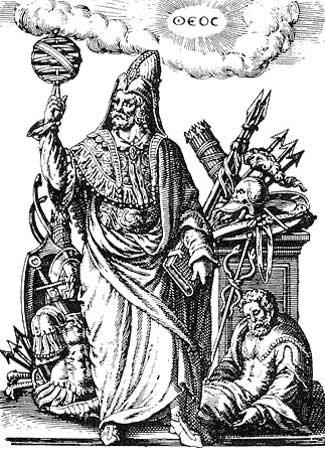
Hermes Trismegistus |
The ‘architect gods’ such as Thoth or Hermes are linked strongly with the serpent wisdom as we discovered in The Serpent Grail. Other references also link the Shamir to the snake, such as the Testament of Solomon, which calls it a “green stone,” like the Emerald Tablet [4], which obviously provides further evidence for the Shamir to have been serpent wisdom.
Returning to Hiram we find that the name Hir-Am actually means ‘exalted head of the people:’ (Hir = Head, exalted, Am = people) and is closely related to Abraham (Ab Hir Am).
However, it also has another and more telling meaning.
Ahi-Ram actually means ‘exalted snake.’ So, in either meaning Hiram was the ‘exalted head’ or ‘snake,’ both meanings being paramount to the discovery of the thread of the snake cult and religious underlying beliefs - the mixture of the opposites within one‘s own head as shown in The Serpent Grail.
Hiram was also believed by some (according to David Wood in his book, Genisis) to be descended from Cain via Tubal-Cain who was said to be the only survivor of the “superior race” after the flood.
The race is supposed to be called Elohim (people of the ‘fiery snake’) or the ‘Shining Ones,’ also known as the ‘serpent people.’ This tale is derived from a text known as E or Elohim from around 750 BC and also gives rise to the stories of the Dionysiac Architects - themselves also linked with the Freemasons.
No wonder therefore that the pillars of Hiram should be related closely to the worship of the snake. Rosslyn and especially one of its mock Temple pillars, as we are now so acutely aware, is entwined with the symbolism of snakes not just as a direct relation to the Norse myths of Yggdrassil, with its gnawing serpent but ultimately as symbols of the religious power of the Gnostic serpent.
On the Secret Scroll discovered by Andrew Sinclair one of the most important images is the sight of a large, coiled, Serpent beneath the Temple steps, with a crown, a pick and a shovel, as if pointing towards the excavation of the Temple itself.
There is a legend which may back up Andrew Sinclair’s findings and which he does not mention.
This oriental legend tells how the Queen of Sheba was attracted to Hiram and that King Solomon became jealous so jealous in fact, that he plotted the death of Hiram. Molten metal used in the casting of a ‘brazen sea’ was going to be used to kill Hiram, but he was saved by the “spirit” of Tubal-Cain his ancestor who is linked with serpent worship - he was therefore saved by the serpent from death. Hiram threw his “jewel” down a deep well, but was then killed by Solomon’s assassins by a blow to the head. It was said that three masters later found the body and venerated it. The jewel was found and placed on a triangular altar, which Solomon then had erected in a secret vault beneath the Temple. (Josephus, Antiquities V111, 3:4) What was the jewel of this builder, which caused so much veneration? Whatever it was, later crusader knights under the guise of Knights Templars were supposedly to dig furiously beneath the Temple to discover. Of course the Templars are believed to have dug for other items, they and others, such as St. Bernard, thought were located there like the Ark of the Covenant. It may be of course that even this is symbolic and Gnostic language - the eternal search for our own divinity.
Following these dubious excavations both the Templars and the Cistercians under St. Bernard grew in immense wealth. Great building works were carried out across Europe all hiding secret symbolism of the snake, and all using the architectural skills discovered whilst on their travels in the Middle East. Greatest of all however is the symbolism that was brought back with them and which invaded European culture like a contagious virus, seeping into and onto our buildings and works of art and keeping alive an ancient tradition for us to one day rediscover.
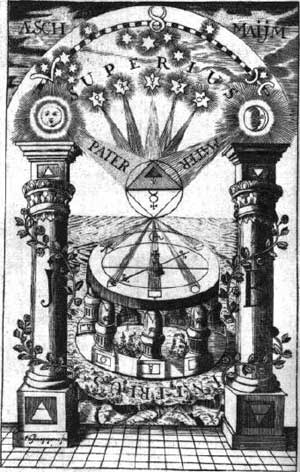
Jachin & Boaz the Twin Towers/Twin Pillars |
The hollow and non-literal Brazen Pillars of Hiram became the twin pillars of the later Masons who themselves, like Moses as the emergent serpent, emerged from the Templars. These pillars were said to be hollow and to contain secret manuscripts which reminds us of the supposed discovery of the manuscripts from Rennes Le Château, also thought to have been found inside a pillar. In truth they do hold a secret, but not one that can be held in the hand.
Now it is time to take a look at another exterior source on the modern Freemasons to see if there are any parallel influences at play - the Dionysiac Architects we have just mentioned.
These are said by Masonic historians to be the prime originators of their guilds. A secretive group or secret society with doctrines said by Manly P. Hall (in Masonic, Hermetic, Quabbalistic & Rosicrucian Symbolical Philosophy) to be similar to the Freemasons. They are thought to have been great builders, reminiscent of the idea of the great architectural Naga’s who escaped India.
It was supposedly this secret society, under Hiram Abiff, who built the Temple of Solomon and erected the great brass pillars now seen as Boaz and Joachim in Masonry. They were also known as the Roman Collegia and were said to have wandered around like the Medieval Masons, building such fantastic places as the Temple of Diana at Ephesus (John Weisse, The Obelisk and Freemasonry.)
Weisse also points out that the Collegia influenced the Islamic building efforts, which were later to become a turning point in Western European architecture after the crusades and possibly via the Collegia’s influence over the Templars amongst others.
These Collegia were also thought to have been known before the Romans in Greece and were said to have worshipped the serpentine Bacchus. Considering the Masonic fascination with the Druids, there is little wonder that the infamous historian and archaeologist William Stukely believed them to have been the builders of Stonehenge and other ancient monuments. Many Masonic writers love to associate themselves with the Druids and we find that they “had a high veneration for the Serpent. Their great god Hu, was typified by that reptile.” George Oliver, Signs and Symbols (Macoy Publishing New York.)
If it is true that the Dionysiac Architects and the Bacchus/Dionysius-worshipping Greek and Roman Collegia, were among the originators of the Freemasons, then it is highly likely that they were linked also with the serpent-worshipping Druids who were also known as Adders or Snakes. They were all in fact a later showing of the worldwide serpent cult the same as those in India, Egypt and elsewhere, who all had fantastic building skills and held secrets of the true and hidden Gnostic traditions. Today we can still see a remnant of this great architectural, serpent-worshipping and secretive cult in the Masons. As George Oliver points out “The Serpent is universally esteemed a legitimate symbol of Freemasonry” and now we see its history is world-wide and some would say justifiably kept alive within the initiated Freemasons.
Philip Gardiner is the author of The Serpent Grail, Gnosis: The Secret of Solomon’s Temple Revealed and The Shining Ones. He can be contact via his website at www.philipgardiner.net
Notes:
1. Brahma is the subtle life-force or the spirit itself and Saraisvati was the River of Life. See The Wonder that was India by A. L. Basham, Fontana Ancient History, 1967.
2. Mahadeva, one of Siva’s names, is often represented with a snake entwined around his neck, arms and hair. His consort, Parvati, is likewise represented. Bhairava, the Avatar of Siva, sits upon the coils of a serpent, whose “head rises above that of the gods.” According to Hyde Clarke & C. Staniland Wake in Serpent and Siva Worship, Siva is the same as Rudra, the healer, and is called the King of Serpents. He is depicted with a garland of skulls, symbolizing time measured in years, the changing of ages. He is called sometimes Nagabhushana Vyalakalpa or “having serpents round his neck” and Nagaharadhrik or “wearing serpent-necklaces” and also Nagaendra, Nagesha or “king of Nagas” is also known as Nakula, the “mongoose” which means one who is immune from the venom of the snake.
3. See Gnosis: The Secret of Solomon’s Temple Revealed by Philip Gardiner due out March 06 under Radikal Books.
4. The word, Emerald comes from the Greek, smaragdos, which simply means ‘green stone’ although true emeralds have been popular for well over 4,000 years. Cleopatra, the famous Queen of Egypt who died from the bite of an Asp, was fond of them and more than any other gem! She had the emerald mined near Aswan. The emerald is found on Jewish breastplates and is used as Indian Talismans. Spaniards stole it during the conquest of South America and the Incas held it in high veneration. It is said to cure fevers, epilepsy, leprosy, dysentery, opthalmia, bleeding, liver problems and stings from venomous beasts. It was also strangely said to “blind” serpents.
The Emerald Tablet is a summary of alchemical thought - existing in Arabic and Greek - and mainly having roots in Roman and Greek alchemy, especially that of Hermes - thus bringing to mind that it must originate from the same source as the Dionysiac Architects or the Roman Collegia.
One of the earliest recordings of its existence is from an 8th century, Arabic work. Some relate the Emerald to the Sacro Catino of Genoa, the supposed Holy Grail, said to have been in the possession of the Queen of Sheba, which was made from green or emerald glass.
It was believed that a physician named Galienus who calls it the Table of Zaradi recovered The Tablet from the Thrice Great Hermes. Many believe Galienus to be the surgeon Galen, but others believe it to be a mistranslation of Balinas (Apollonius of Tyana.) If this is the case, then the Emerald Tablet of the great serpent deity, Hermes, would be coming directly from the sage who visited the Naga (serpent) kings of India and Kashmir and who is himself said to be long-lived.
The term, Zaradi derives from the word for ‘underground cave’ or ‘chamber’ and alludes to an “otherworldly” domain possibly the Shamanic Underworld.
Other people said to have discovered the Tablet are equally incorporated into the serpent worship story. Alexander the Great and Zara (Sarah) the wife of Abraham who is said to have taken it from the hands of Hermes just after the flood.
Philip Gardiner is a best selling author of The Shining Ones, The Serpent Grail and Gnosis: The Secret of Solomon’s Temple Revealed
He can be seen on TV, heard on radio and has written for hundreds of magazines around the world. His website is www.philipgardiner.net
Article from: http://www.bestsyndication.com/Articles/
2006/g/gardiner_philip/02/022906_serpent.htm
Related: Who Was Abraham?
Freemasonry & Secret Societies
Sons of God, Daughters of Men - Who are the Nephilim?
"God" the divine Liar
Snakemen Stone Reliefs Discovered in Jiroft, Iran
Origins of the devil...
House of Vere & the Merovingians - an Antediluvian Dragon Bloodline?
The "1984" Macintosh Ad and the "New Age" of EnLIGHTenment (Illuminati)
